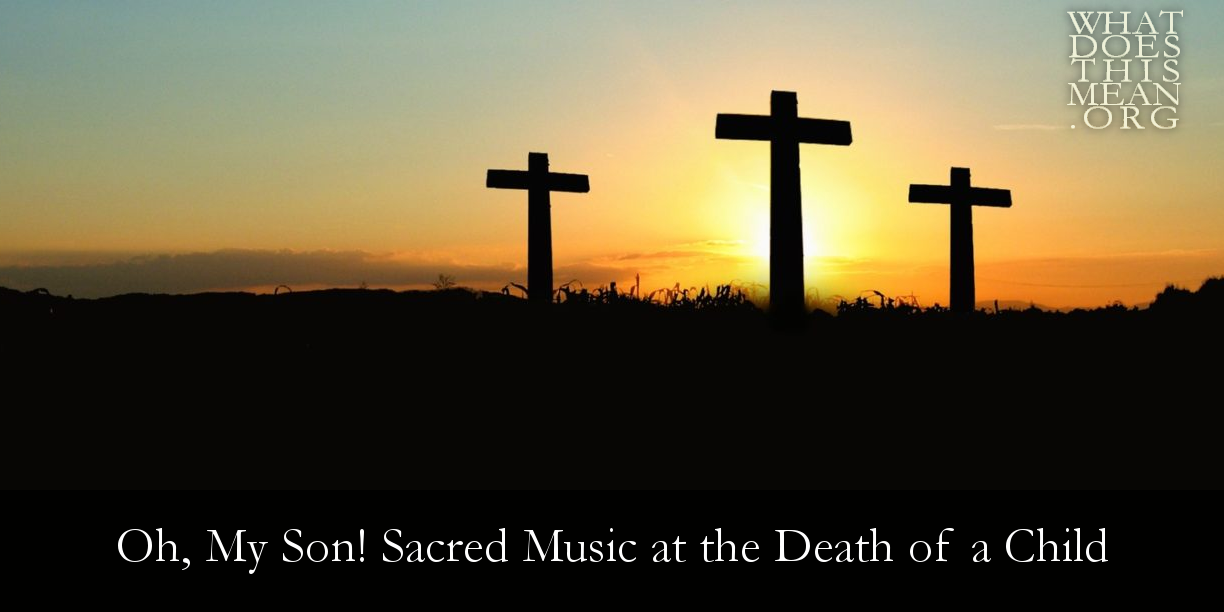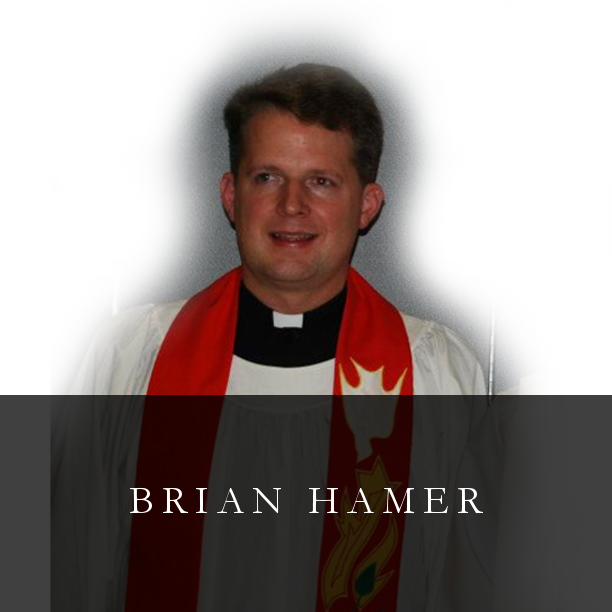Inspired by the inherent pain and sorrow of burying a rebellious adult son, composer Eric Whitacre has given us a choral work to be reckoned with on several levels. Fifteen minutes of unaccompanied singing in 8 parts (sometimes dividing into 18 parts) is a challenge in itself for conductors, performers, and even for listeners. The musical contrasts throughout the work are also striking. The sublimity of the opening and closing choral chants (functioning as an antiphon to the work) stands in vivid contrast to the veritable scream, “Absalom! Absalom! My son, my son!” in the center of the work. Triplets (sets of 3) are often set directly against duplets (sets of 2). Dynamic contrasts range from ppp to ff. Choral textures vary from unison lines to a three-octave spread toward the end of the work. And I think that those who have heard or sung the work will agree that its emotive power is nothing short of stunning. I invite you, the reader, to clear away all distractions, use your best electronic equipment, and journey with David into the depths of sorrow in preparation for the word of the resurrection.
he went up into his chamber over the gate and wept,
my son, my son, O Absalom my son, would God I had died for thee!
Consider the silence around the death bed after a loved one has breathed his last. The shock and the horror—the time for reality to set in and for tears to fall. But then we hear the words “Let us pray,” followed by the comfort and consolation of the good news that our loved ones are not dead, but sleeping.
Think of the silence at the grave site, when the funeral home staff has left and the loved ones remain behind for a while to contemplate the life of faith of their departed loved one. Above all, it is from the silence of the grace, so vividly depicted in Whitacre’s “When David Heard,” that the trumpet shall sound on the last day, the dead shall be raised, and we will be reunited with our sons and daughters who have departed this world in the faith. Thanks be to God, who gives us this victory, through our Lord Jesus Christ!
Now consider a similar hymn from St. Ephraim Syrus, deacon and hymnographer of the fourth century. The following hymn, which begins in a similar manner to David’s lament for Absalom, is subtitled “Motives for Restraining Sorrow.”
| Oh my son, tenderly loved! Whom grace fashioned In his mother’s womb, And divine goodness completely formed . . . I fear to weep for thee, Because I am instructed That the Son of the Kingdom hath removed thee To His bright habitation. (Quoted in Gregory P. Schulz, The Problem of Suffering, pp. 129–130) |
| My judgment recalls me, And listens with admiration To the voices of those who live on high; To the song of the spiritual ones Who cry aloud, Hosannah! At thy marriage festival. (Schulz, A Father’s Hope, p. 131) |
Yes, “Hosanna!” is the acclamation of those who see their sin and know their Savior, the only-begotten Son, who died not out of rebellion against His Father, but as part of the Father’s Divine plan for us and for our salvation. At the cross, the innocent One died for the rebellious ones and made peace with God. The price is paid! Death is conquered! David’s tomb was well known in Jerusalem in Jesus’ day (Acts 2:29), but the tomb of Jesus is empty, for He is risen and He sits at God’s right hand, with death and the devil as His footstool (Ps. 110:1). “Save us now” is the prayer of faithful communicants, who join their voices with the those who live on high to receive a foretaste of the eternal marriage festival, a preliminary reunion with those they love who have departed in the faith.
Whitacre’s work—complex, challenging, and dissonant—delivers the ultimate musical expression of the law, a necessary precursor to the gospel. The hymn of St. Ephraim Syrus helps us see through our tears to the eternal supper of the Lamb. The following chant–a simple, unadorned and unharmonized melodic line—preaches the fullness of the gospel in just one minute of music, but it is enough to comfort the sorrowful, to wipe every tear from their eyes, and to prepare the faithful to depart in peace.
| Ego sum resurrection et vita; qui credit in me, etiam si mortuus fuerit, vivet; et omnis vivit et credit in me, non morietur in aeternum. | I am the resurrection and the life; he that believeth in me, though he were dead, yet shall he live; and whoever liveth and believeth in me, shall not die eternally. |



 RSS Feed
RSS Feed
